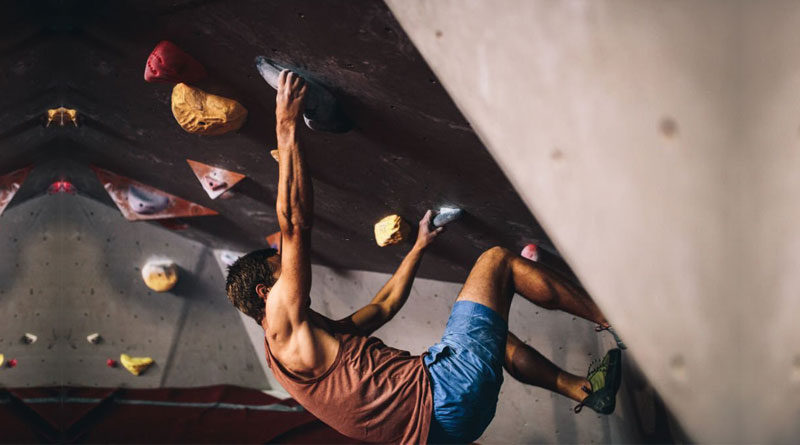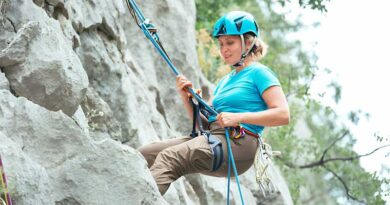Is Indoor Rock Climbing A Good Workout?
Yes, indoor rock climbing can be hard but a great workout. It’s a total-body workout that can boost your cardiovascular fitness, strength, and flexibility. Rock climbing requires you to use both your upper and lower bodies in a coordinated effort to pull yourself up the wall, making it an excellent way to work out a variety of muscle groups. Additionally, the requirement for balance, focus, and problem-solving abilities provides a mental workout. However, the intensity of the workout can vary depending on factors such as route difficulty and climbing speed, so it’s important to find a level that challenges you while remaining safe and enjoyable.
Physical Benefits
Physical benefits of indoor rock climbing include:
Cardiovascular Fitness
Rock climbing is a highly aerobic activity that can improve cardiovascular fitness by increasing heart rate and endurance. It can be a great way to get your heart rate up and challenge your cardiovascular system.
Strength Training
It is a full-body workout that can improve your upper body, lower body, and core strength. The act of pulling yourself up the wall requires the use of your arms, back, and legs, so you will be working out many different muscle groups.
Flexibility and Balance
It’s a great way to increase balance and flexibility. Maintaining balance on the wall can help to increase stability and coordination while stretching and reaching for holds can help to increase flexibility.
Muscle Tone
You can tone your muscles, especially your arms, and legs, by rock climbing. You must support yourself on the wall by using your body weight, which over time may result in more defined muscles.
Weight Loss
For those trying to lose weight, rock climbing can be a good exercise that burns calories. A person can expend up to 500 calories climbing for an hour, depending on the difficulty of the ascent.
Mental Benefits
In addition to the physical benefits, indoor rock climbing can also have a number of mental benefits, including:
Focus and Concentration
Rock climbing requires intense focus and concentration, as you need to be aware of your hand and foot placement, your balance, and the route ahead of you. This focus can improve hand-eye coordination, problem-solving skills, and overall mental clarity.
Stress Relief
Rock climbing can be a great way to relieve stress and anxiety. The mind-body connection required to climb can be meditative and help to clear the mind. Physical exertion can also release endorphins, which can improve overall mood and reduce stress levels.
Confidence Boost
Rock climbing can be a confidence-boosting activity, as it requires you to push your physical and mental limits in a controlled environment. Overcoming a challenging climb can give you a sense of accomplishment and help to build self-esteem.
Social Benefits
Indoor rock climbing can also be a social activity, as many climbing gyms offer classes and group sessions. Climbing with others can be a fun and supportive experience, and can help to build relationships and a sense of community.
Choose the Right Difficulty Level
Choosing the right difficulty level is critical in indoor rock climbing because it influences the intensity of the workout and the overall experience. When deciding on a difficulty level, consider the following:
Personal Fitness Level
It is important to choose a difficulty level that matches your personal fitness level. If you are a beginner, starting with easier routes is recommended. As you build strength and confidence, you can gradually increase the difficulty of the climbs.
Climbing Experience
Consider your prior climbing experience when choosing a difficulty level. If you have limited experience, it is best to start with easier routes and gradually increase the difficulty as you improve.
The Intensity of the Workout
The intensity of the workout can vary depending on the difficulty of the route. Harder routes require more strength and endurance, while easier routes may be more relaxed and less strenuous. Consider your goals for the workout when choosing a difficulty level.
Safety
Safety is always the most important factor when climbing. If you are unsure of your ability to complete a climb, it is best to start with a more accessible route. Additionally, it is important to follow all gym rules and guidelines to ensure a safe and enjoyable climbing experience.
Conclusion
In conclusion, indoor rock climbing is a highly effective workout that can offer numerous physical and mental benefits. From improving cardiovascular fitness and strength to relieving stress and boosting confidence, indoor rock climbing is a versatile and challenging sport that can be enjoyed by people of all skill levels.
When determining the appropriate difficulty level, consider your personal fitness level, climbing experience, workout intensity, and safety. Indoor rock climbing, when approached correctly, can be a fun and rewarding workout that offers a unique combination of physical and mental challenges.
Indoor rock climbing is a great way to improve your overall health and wellness, whether you are a seasoned climber or just starting out. So, why not give it a shot today and see if indoor rock climbing is the right workout for you?




